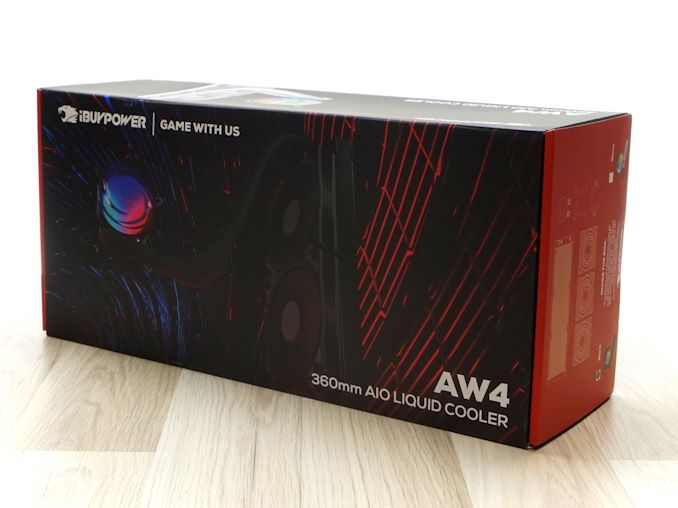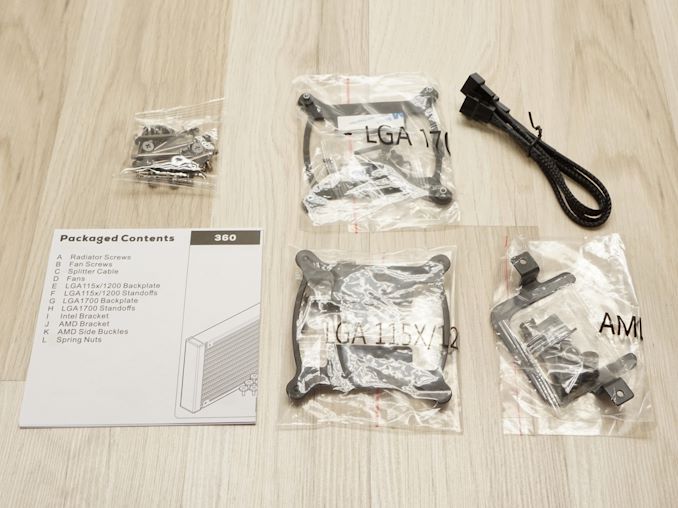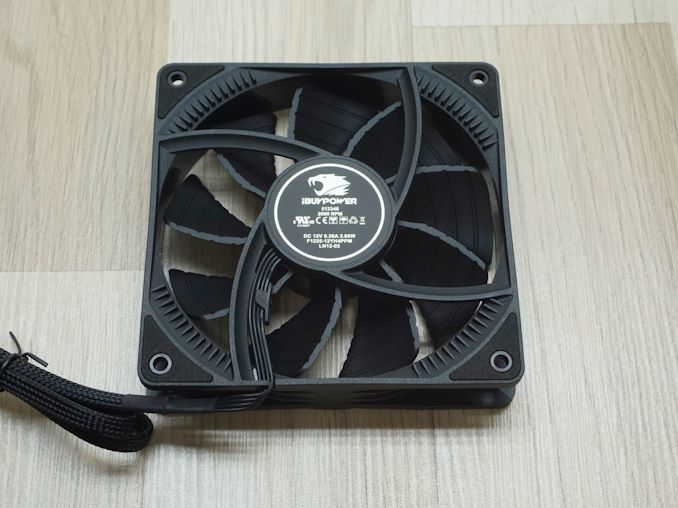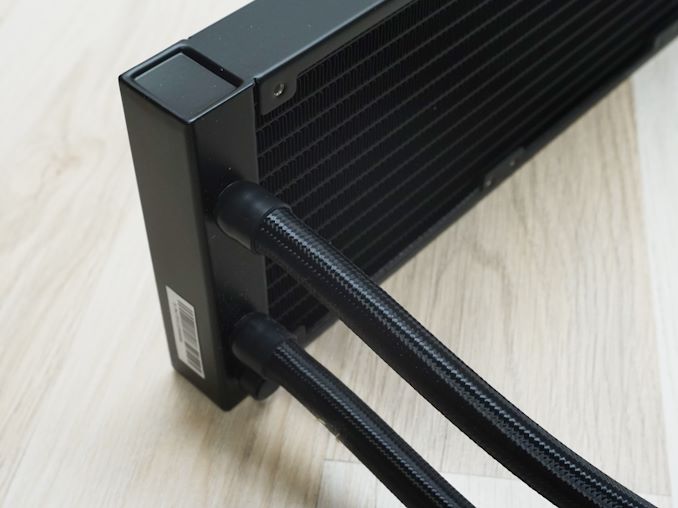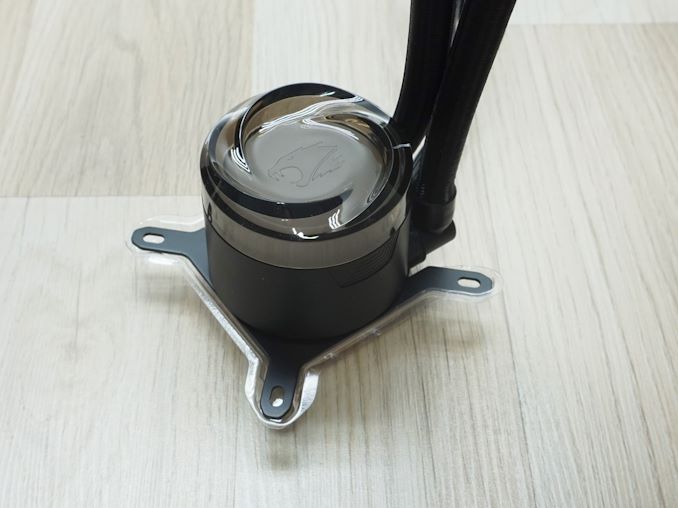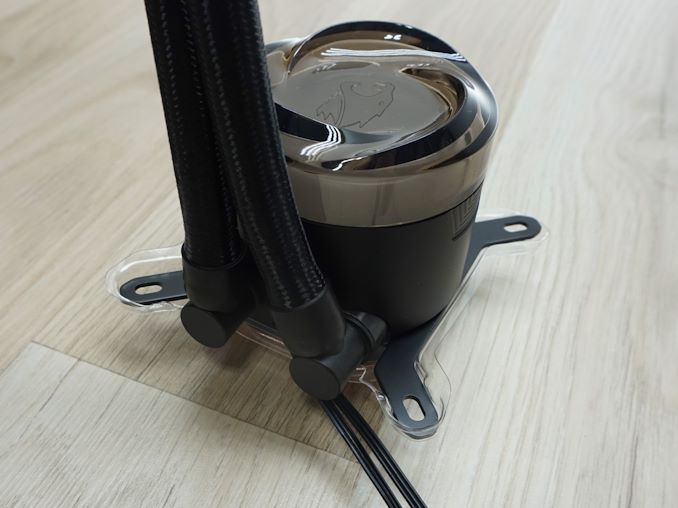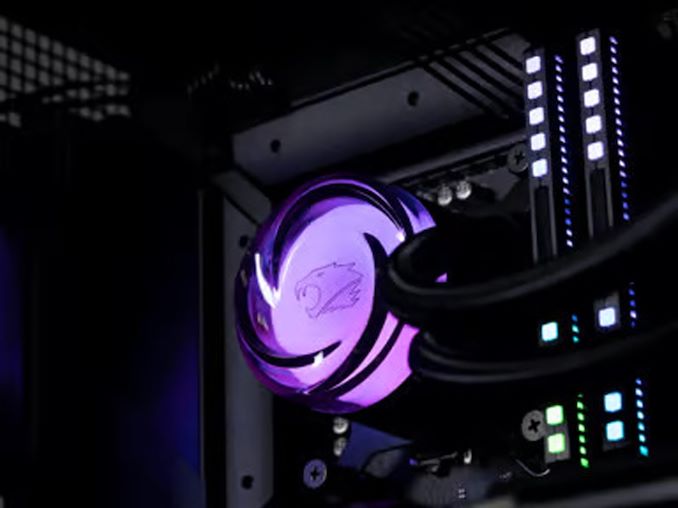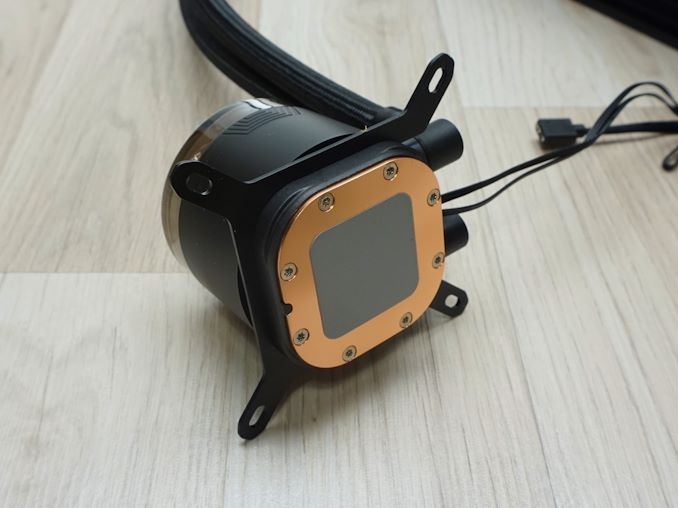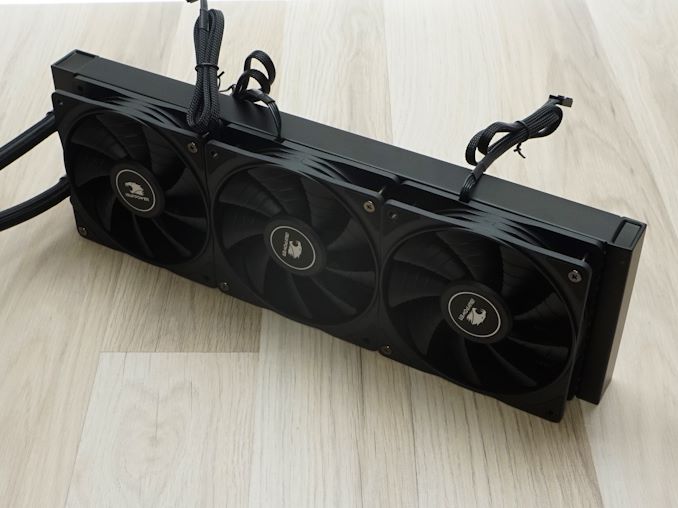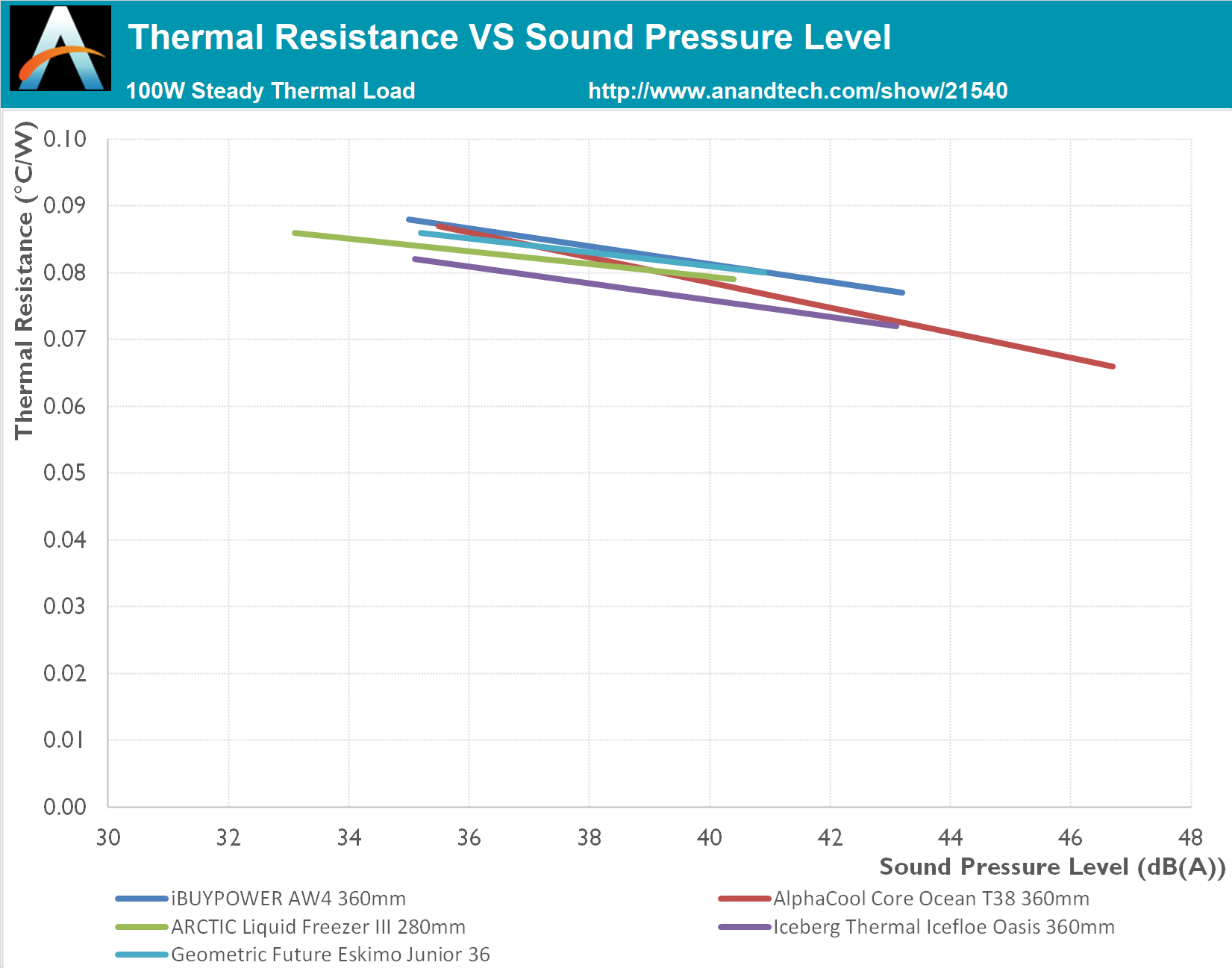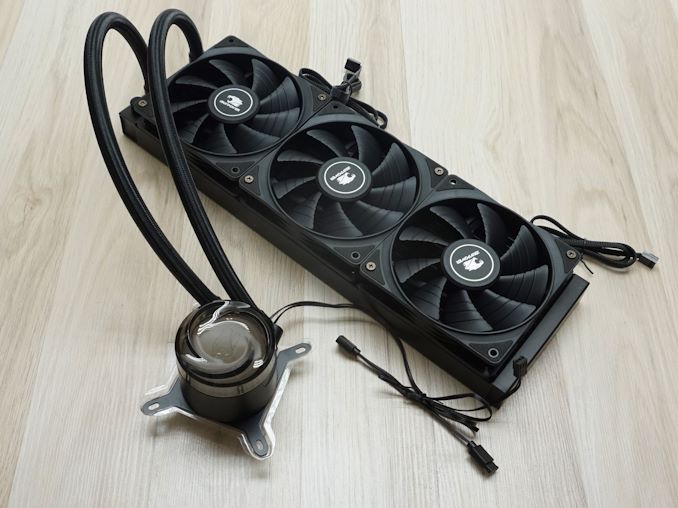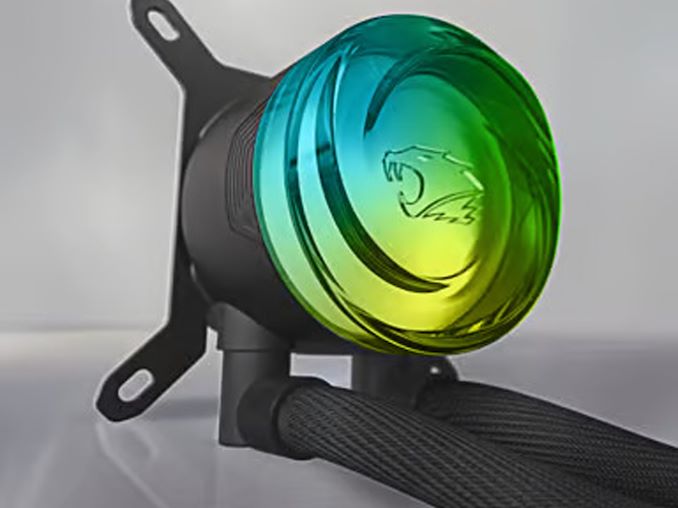
Original Link: https://www.anandtech.com/show/21540/the-ibuypower-aw4-aio-cooler-review
The iBUYPOWER AW4 360 AIO Cooler Review: A Good First Effort
by E. Fylladitakis on August 29, 2024 8:00 AM EST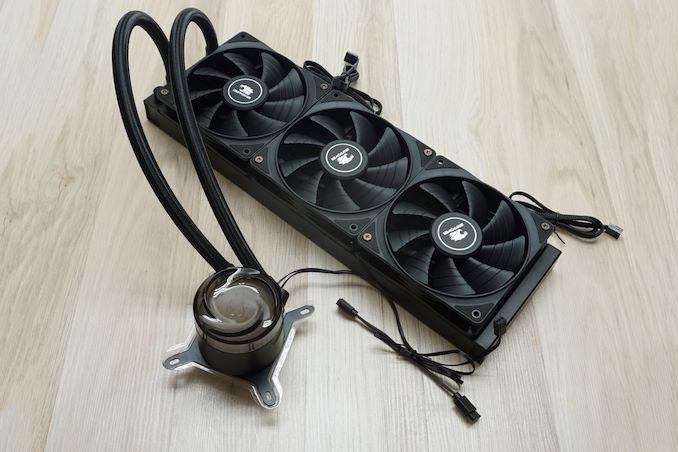
iBUYPOWER is a U.S.-based company known for its custom-built gaming PCs and peripherals. Established in 1999, the company offers a wide range of self-branded products, including pre-built desktop computers, laptops, and gaming accessories. These products are designed to cater to various performance needs, from casual gaming to high-end competitive gaming. iBUYPOWER is particularly recognized for its customizable gaming PCs, allowing users to choose specific components according to their preferences. The company's self-branded peripherals, like keyboards, mice, and headsets, are designed to complement their gaming systems, providing a cohesive experience for gamers.
iBUYPOWER also offers a selection of cooling-related products, including air and liquid cooling solutions, tailored to ensure optimal thermal performance and custom aesthetics for their gaming systems. Most of these products are from other manufacturers, but the company is also branching out into selling their own cooling related products. Most notable of these is the new AW4 360 mm AIO liquid cooler. This review will focus on the AW4 AIO, evaluating its design, cooling efficiency, and overall performance within high-demand gaming and computing environments.
| iBUYPOWER AW4 360 ARGB AIO Cooler Specifications |
|||
| Type | All-in-One Liquid Cooler | ||
| Dimensions | 397 x 120 x 52 mm (radiator with fan) | ||
| Fans | 3 x 120 mm Hydraulic Bearing Fans 2000 RPM (max) |
||
| RGB | Yes (ARGB) | ||
| Supported Sockets | Intel: LGA1700 / LGA 115x AMD: AM5 / AM4 |
||
| Warranty | 3 Years | ||
| Price | $99 | ||
Packaging & Bundle
We received the AW4 in a long, sturdy cardboard box that hints the dimensions of the cooler. The black/red box is adorned with abstract shapes and a rendering of the cooler itself. Inside the box, the cooler is securely placed within custom-designed cardboard inserts, ensuring its protection during transit.
iBUYPOWER provides only the absolutely essential parts required to use the AW4. Inside the box, we only found a basic manual, the required hardware to mount the cooler, and a cable for powering the three cooling fans. We should note that there is no LED controller included, a compatible motherboard is required for the LED lighting to work.
The three 120 mm fans included with the AW4 bear the iBUYPOWER logo and we could not identify their OEM. They have an advanced sleeve bearing engine, notched fan blades, and soft anti-vibrational pads on their frame’s edges. There are no LEDs installed on them. Their speed range is rather narrow, ranging from 700 to 2000 RPM.
The iBUYPOWER AW4 360 mm AIO Liquid Cooler
At first glance, the iBUYPOWER AW4 360 mm cooler closely aligns with the standard design of most 360 mm AIO coolers on the market. This cooler follows the typical AIO configuration, featuring a single radiator, two hoses, and a combined block that integrates a copper CPU contact plate with a compact liquid pump. iBUYPOWER employs black sleeved low-permeation rubber tubing, enhancing both flexibility and visual appeal.
The substantial radiator of the AW4 360 mm cooler, measuring 397 mm in length, requires a case that can accommodate three 120 mm fans in sequence, with enough space for the radiator's additional dimensions. With a thickness of 27 mm, the radiator requires a total clearance of 55 mm when paired with fans to ensure proper installation. It adheres to the prevalent dual-pass cross-flow design, featuring small fins soldered onto thin, oblong tubes. There are no company logos or other adornments on the radiator.
The main block of the iBUYPOWER AW4 360 mm cooler is the only part of the cooler that has been designed to draw attention. It features a smooth, round body with a high-gloss semi-transparent top cover with the company logo. The LEDs under the cover create an eye-catching faux 3D visual effect. The hoses are accommodated by 90° fittings on its side, and two cables exit from the same area—one 4-pin power cable and one for the RGB lighting.
At the bottom of the main block assembly, a squircle contact plate is attached to the plastic base cover with eight screws. The surface is not polished to a mirror finish but is sufficiently smooth and flat. There is a thermal pad pre-applied to the base.
The RGB lighting of the iBUYPOWER AW4 360 mm cooler is present at the top of the main cooling block alone. It is attractive and draws attention without being overwhelming, and it syncs with any other RGB-equipped parts that are also connected to the motherboard’s RGB controller. The downside here is that the lighting of the AW4 will not function at all if it is not connected to a compatible RGB controller.
Testing Methodology
Although the testing of a cooler appears to be a simple task, that could not be much further from the truth. Proper thermal testing cannot be performed with a cooler mounted on a single chip, for multiple reasons. Some of these reasons include the instability of the thermal load and the inability to fully control and or monitor it, as well as the inaccuracy of the chip-integrated sensors. It is also impossible to compare results taken on different chips, let alone entirely different systems, which is a great problem when testing computer coolers, as the hardware changes every several months. Finally, testing a cooler on a typical system prevents the tester from assessing the most vital characteristic of a cooler, its absolute thermal resistance.
The absolute thermal resistance defines the absolute performance of a heatsink by indicating the temperature rise per unit of power, in our case in degrees Celsius per Watt (°C/W). In layman's terms, if the thermal resistance of a heatsink is known, the user can assess the highest possible temperature rise of a chip over ambient by simply multiplying the maximum thermal design power (TDP) rating of the chip with it. Extracting the absolute thermal resistance of a cooler however is no simple task, as the load has to be perfectly even, steady and variable, as the thermal resistance also varies depending on the magnitude of the thermal load. Therefore, even if it would be possible to assess the thermal resistance of a cooler while it is mounted on a working chip, it would not suffice, as a large change of the thermal load can yield much different results.
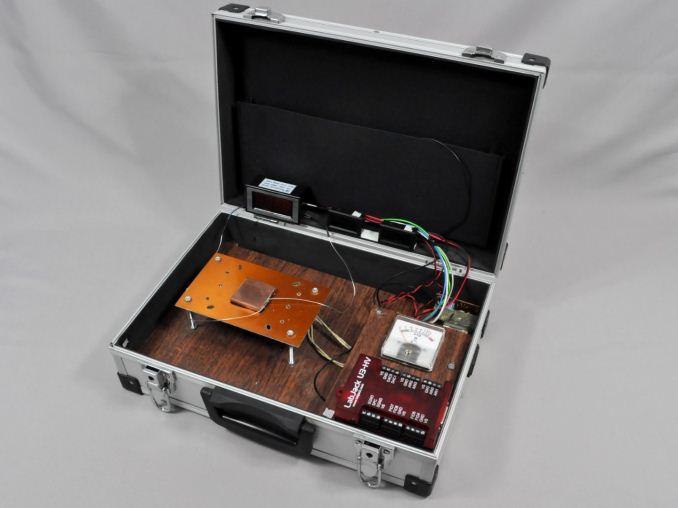
Appropriate thermal testing requires the creation of a proper testing station and the use of laboratory-grade equipment. Therefore, we created a thermal testing platform with a fully controllable thermal energy source that may be used to test any kind of cooler, regardless of its design and or compatibility. The thermal cartridge inside the core of our testing station can have its power adjusted between 60 W and 340 W, in 2 W increments (and it never throttles). Furthermore, monitoring and logging of the testing process via software minimizes the possibility of human errors during testing. A multifunction data acquisition module (DAQ) is responsible for the automatic or the manual control of the testing equipment, the acquisition of the ambient and the in-core temperatures via PT100 sensors, the logging of the test results and the mathematical extraction of performance figures.
Finally, as noise measurements are a bit tricky, their measurement is being performed manually. Fans can have significant variations in speed from their rated values, thus their actual speed during the thermal testing is being recorded via a laser tachometer. The fans (and pumps, when applicable) are being powered via an adjustable, fanless desktop DC power supply and noise measurements are being taken 1 meter away from the cooler, in a straight line ahead from its fan engine. At this point we should also note that the Decibel scale is logarithmic, which means that roughly every 3 dB(A) the sound pressure doubles. Therefore, the difference of sound pressure between 30 dB(A) and 60 dB(A) is not "twice as much" but nearly a thousand times greater. The table below should help you cross-reference our test results with real-life situations.
The noise floor of our recording equipment is 30.2-30.4 dB(A), which represents a medium-sized room without any active noise sources. All of our acoustic testing takes place during night hours, minimizing the possibility of external disruptions.
| <35dB(A) | Virtually inaudible |
| 35-38dB(A) | Very quiet (whisper-slight humming) |
| 38-40dB(A) | Quiet (relatively comfortable - humming) |
| 40-44dB(A) | Normal (humming noise, above comfortable for a large % of users) |
| 44-47dB(A)* | Loud* (strong aerodynamic noise) |
| 47-50dB(A) | Very loud (strong whining noise) |
| 50-54dB(A) | Extremely loud (painfully distracting for the vast majority of users) |
| >54dB(A) | Intolerable for home/office use, special applications only. |
*noise levels above this are not suggested for daily use
Testing Results, Maximum Fan Speed
Our maximum speed testing is performed with both the fans and the pump of the kit powered via a 12V DC source. This input voltage should have the pump and fans matching the speed ratings of the manufacturer. According to the company’s specifications, the fans included should have a rotational speed of 2000 RPM. Our tachometer indicated that the fans were rotating at an average speed of 1940 RPM, very close to their rated specifications.
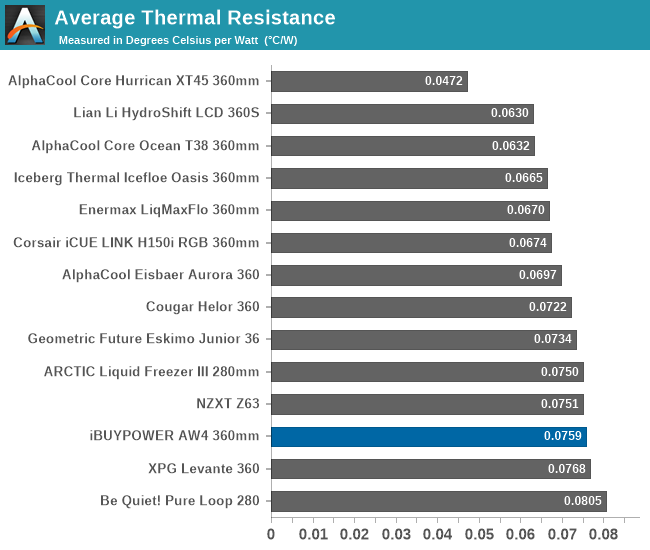
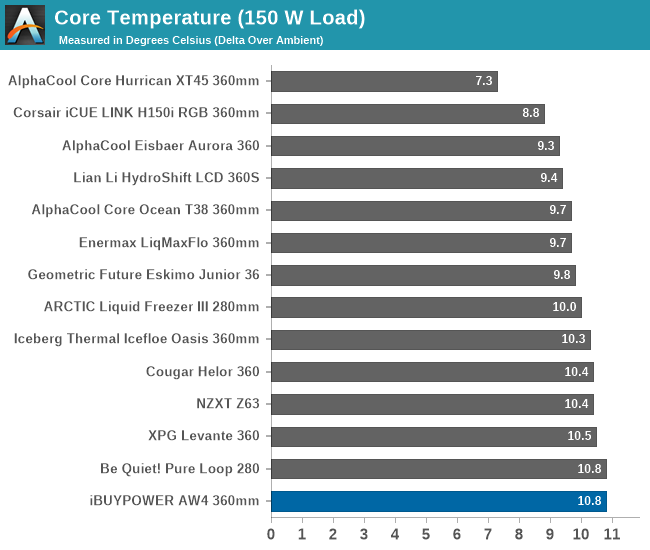
| Core Temperature, Constant Thermal Load (Max Fan Speed) |
The iBUYPOWER AW4 360 mm cooler demonstrates commendable performance across various loads, with an average thermal resistance of 0.0759 °C/W at its maximum fan speed of 1940 RPM. While this figure is slightly higher than some other 360 mm coolers, it is fair considering the relatively modest maximum speed of the supplied fans. The cooler performs very well under high loads but loses some efficiency when the load is very low.

At full fan speed, the AW4 maintains a sound pressure level (SPL) of 43.2 dB(A), which, while tolerable, is a little high compared to what the immediate competition offers. 360 mm coolers, like the AW4, typically do not require their fans to run at maximum speed, as they can manage the thermal load of most CPUs efficiently without doing so.
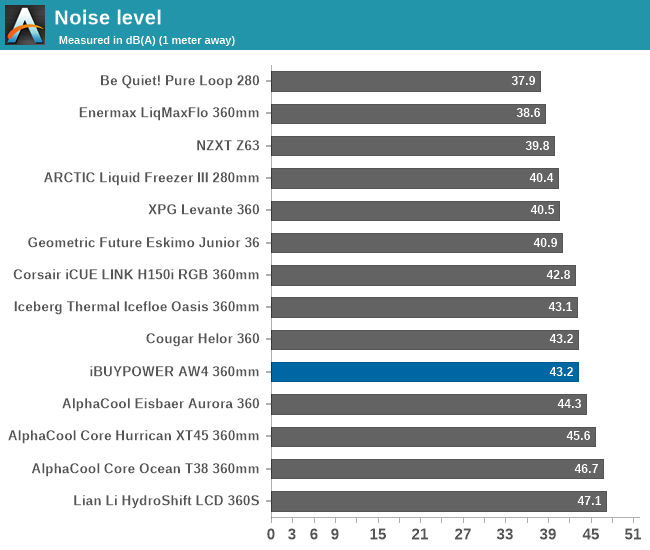
Testing Results, Low Fan Speed
Using a PWM voltage regulator, we reduced the speed of the fans manually down to half their rated speed. At this setting, the 120 mm fans of the AW4 rotate at 1000 RPM.
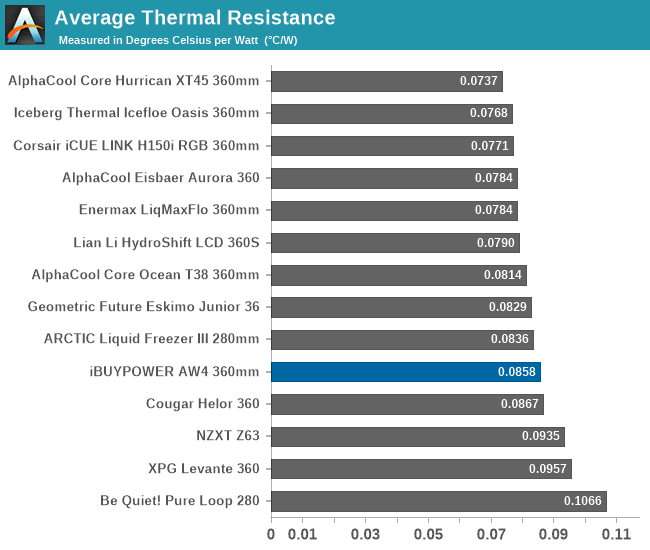
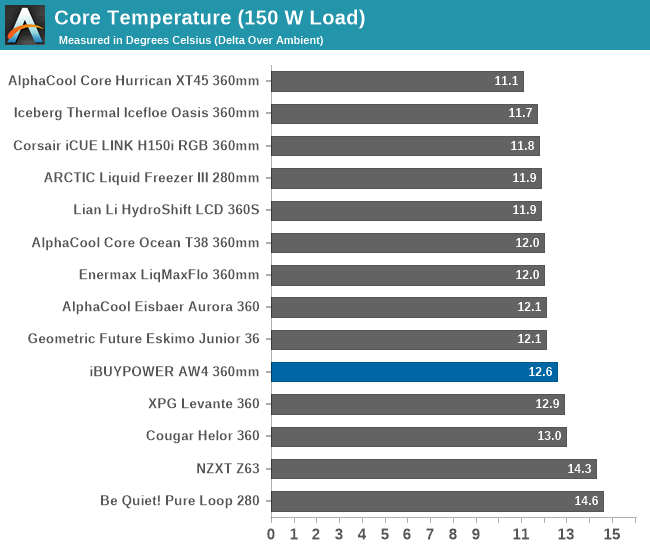
| Core Temperature, Constant Thermal Load (Low Fan Speed) |
With its fans operating at half speed, the iBUYPOWER AW4 360 mm cooler demonstrates fair cooling efficiency with an average thermal resistance of 0.0858 °C/W. It tends to be more efficient when the loads are high but not by much.

The acoustic performance of the iBUYPOWER AW4 is acceptable when its fans operate at half speed. At 1000 RPM, the cooler maintains a relatively low noise level of 35 dB(A), which is a very good figure as far as user comfort is concerned and fairly low for a 360 mm cooler.
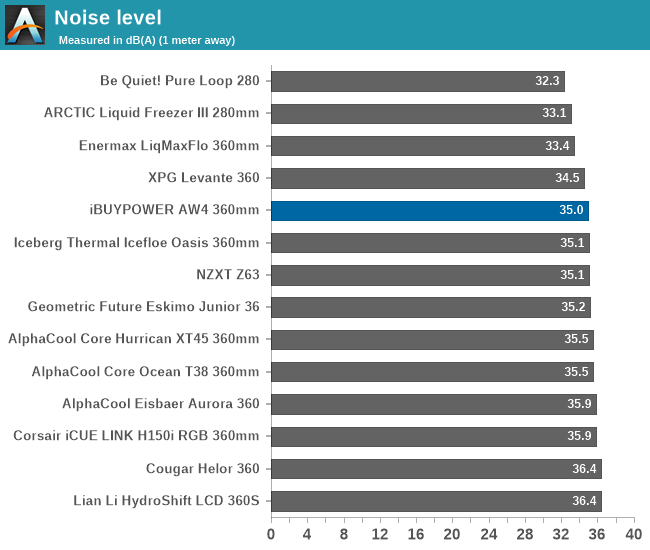
Thermal Resistance VS Sound Pressure Level
During our thermal resistance vs. sound pressure level test, we maintain a steady 100W thermal load and assess the overall performance of the coolers by taking multiple temperature and sound pressure level readings within the operating range of the stock cooling fans. The result is a graph that depicts the absolute thermal resistance of the cooler in comparison to the noise generated. For both the sound pressure level and absolute thermal resistance readings, lower figures are better.
While the iBUYPOWER AW4 may slightly trail some similar designs in its category, it remains competitive in the market. It offers good thermal performance that remains fairly consistent and shows minimal impact from changes in airflow. Expectedly, its overall performance is on par with similar cooling solutions, however it does lag a little behind some of its direct competitors.
Conclusion
The iBUYPOWER AW4 360 mm AIO liquid cooler is a solid entry into the competitive market of triple-fan liquid coolers, especially considering it is the company's first attempt at releasing a cooling solution under its own brand. Priced at $99, the AW4 offers a compelling value proposition for users seeking a balance between performance, aesthetics, and cost. While it may not revolutionize the industry, it certainly holds its ground against similar offerings from more established brands.
In terms of performance, the AW4 does a commendable job of managing CPU temperatures, particularly under high-load scenarios. With an average thermal resistance of 0.0759 °C/W at its maximum fan speed of 1940 RPM, the cooler performs well, though it slightly trails behind some of its direct competitors. The cooler's efficiency decreases slightly at lower loads, but it still maintains a fair level of cooling efficiency when the fans are operating at half speed, with an average thermal resistance of 0.0858 °C/W at 1000 RPM.
Acoustically, the AW4 is competitive but not exceptional. At full fan speed, it produces a sound pressure level (SPL) of 43.2 dB(A), which, while tolerable, is on the higher end compared to some rival coolers. This noise level may be noticeable during intensive tasks but it is unlikely to be a deal-breaker for most users. When the fans are running at half speed, the noise level drops to a more comfortable 35 dB(A), making it a quieter solution for everyday use and brings it to a much more competitive place in our charts.
Aesthetically, the AW4 is well-designed, with a clean and modern look that will complement most gaming setups. The RGB lighting on the main block is subtle yet effective, adding a touch of visual flair without being overwhelming. However, the lack of included RGB controllers means that users must have a compatible motherboard to take full advantage of the lighting features, which could be an inconvenience for some.
Overall, the iBUYPOWER AW4 360 mm AIO liquid cooler is a strong first effort from the company. It offers good thermal performance, reasonable acoustics, and a visually appealing design at a competitive price point. While it does not stand out as the absolute best in its class, it is certainly a viable option for gamers and PC enthusiasts looking for a reliable and aesthetically pleasing cooling solution. With a few refinements, future iterations could see iBUYPOWER becoming a more significant player in the cooling market.

